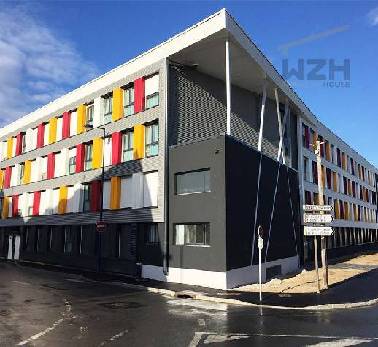Prefabricated shipping containers have gained popularity as versatile, cost-effective, and sustainable building materials. These containers offer a wide range of possibilities for various construction projects, including residential homes, offices, retail spaces, and more. However, selecting the right prefabricated shipping containers requires careful consideration of several factors. In this guide, we will provide you with comprehensive guidelines on choosing prefabricated shipping containers, covering aspects such as size, condition, customization options, structural integrity, and sustainability. By following these considerations, you can make an informed decision and ensure that your project meets your requirements and achieves your desired outcome.
Standard Sizes: Shipping containers come in standard sizes, such as 20 feet and 40 feet. Determine the size that best fits your project's requirements and available space. Consider factors like the number of occupants, intended use, and desired layout.
Multiple Units and Configurations: Evaluate if a single container is sufficient for your needs or if multiple containers can be combined to create a larger space. Explore configurations, such as side-by-side, stacked, or modified designs, to optimize functionality and space utilization.
Prefabricated Shipping Container
New vs. Used Containers: Decide whether new or used containers are suitable for your project. New containers offer pristine condition, while used containers may have wear and tear. Consider your budget, desired aesthetics, and the extent of modifications required.
Structural Integrity: Inspect the containers for structural integrity. Look for signs of damage, rust, or corrosion. Ensure that the container's frame, walls, and roof are in good condition and capable of withstanding the intended usage and environmental conditions.
Ease of Modification: Determine the level of customization and modifications needed for your project. Choose containers that can be easily modified to accommodate windows, doors, plumbing, electrical systems, insulation, and other requirements.
Compatibility: Ensure that the container's design and structure are compatible with the planned modifications. Consider factors like load-bearing capacity, wall reinforcements, and compatibility with building codes and regulations.
Roof Strength: Assess the roof's load-bearing capacity to support additional structures, such as green roofs, solar panels, or HVAC systems. Ensure that the container has adequate structural reinforcement for these additions.
Foundation Requirements: Consider the foundation requirements for the containers. Determine if a concrete slab, piers, or other foundation systems are necessary to provide stability and proper weight distribution.
Recycled Containers: Opt for containers made from recycled materials to reduce environmental impact and promote sustainability. These containers often have lower embodied energy and contribute to resource conservation.
Energy Efficiency: Consider containers with energy-efficient features, such as insulation, high-quality windows, and efficient HVAC systems. These features help minimize energy consumption and create comfortable indoor environments.
Green Building Certifications: Check if the containers or manufacturers have certifications, such as LEED (Leadership in Energy and Environmental Design) or other sustainable building standards. This ensures that the containers meet specific sustainability criteria.
Choosing the right prefabricated shipping containers is essential for successful construction projects. By considering factors like size, condition, customization options, structural integrity, and sustainability, you can make informed decisions that align with your project's requirements. Assessing these aspects allows you to optimize space utilization, ensure structural stability, and minimize environmental impact. Whether you're building a home, office, or retail space, prefabricated shipping containers offer versatility and cost-effectiveness. By following this guide, you can select containers that meet your needs, achieve your design vision, and contribute to a sustainable and functional space.
 Container House-is Quietly Changing Your Future Life!
The container house is listed as the 19th invention. US Business Weekly reported: "Using containers to rebuild houses, this invention can solve the housing problems of hundreds of millions of poor families. At present, a container house with a usable area
Container House-is Quietly Changing Your Future Life!
The container house is listed as the 19th invention. US Business Weekly reported: "Using containers to rebuild houses, this invention can solve the housing problems of hundreds of millions of poor families. At present, a container house with a usable area
Oct. 15

WEIZHENGHENG Modular House Technology CO.,LTD provides various configurations of Flat Pack container houses. It can meet the needs of home living.
Copyright © Hebei Weizhengheng Modular House Technology Co., Ltd. All Rights Reserved |Sitemap